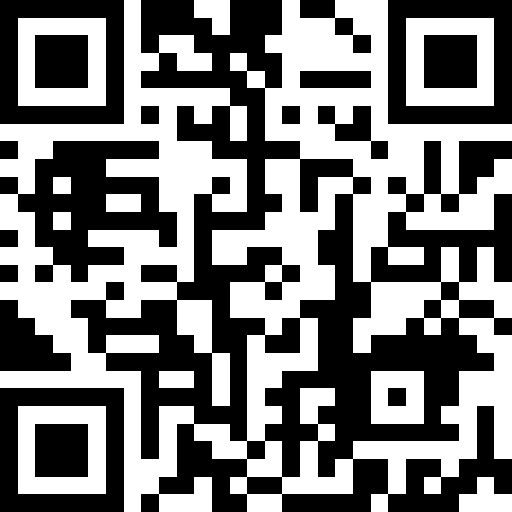Information
-
Audit Title
-
Client / Site
-
Conducted on
-
Prepared by
-
Location
-
Personnel Involved in Inspection:
Harness Inspection
- Harness
Harness Information
-
Is Label Attached to Harness?
-
Is Label Fully Legible?
-
Take photo of label or enter information below.
-
Harness Date of Manufacture
-
Manufacturer of Harness
-
Serial Number of Harness
-
Model # of Harness
Webbing
-
Inspect the entire surface of webbing for damage. Beginning at one end, bend the webbing in an inverted “U.” Holding the body side of the belt toward you, grasp the belt with your hands six to eight inches Apart. This surface tension makes the damaged fibers or cuts easier to see. Watch for frayed edges, broken fibers, pulled stitches, cuts, burns and chemical damage.
-
Free of Cuts?
-
Free of Frays?
-
Free of Broken Fibers?
-
Free of Broken Stitches?
-
Free of Tears?
-
Free of Abrasions?
-
Free of Punctures?
-
Free of Burns?
Hardware Condition:
-
“D” Rings/Back Pads: Check “D” rings for distortion, cracks, breaks and rough or sharp edges. The “D” ring should pivot freely. “D” ring back pads should also be inspected for damage.
-
Free of Damaged or Worn Parts?
-
Free of Broken or Bent Parts?
-
Free of Any Sharp Edges?
-
Free of Burrs?
-
Free of Cracks?
-
Parts Free of Distortion and Elongation?
-
Free of Corrosion?
-
Free of Loose, Distorted or Missing Grommets?
-
Do Buckles Function Correctly?
Attachment of Buckles: Note any unusual wear, frayed or cut fiber, or distortion of the buckles.
Tongue/Grommet: The tongue receives heavy wear from repeated buckling and unbuckling. Inspect for loose, distorted or broken grommets. The webbing should not have any additional punched holes.
Tongue Buckle: Buckle tongues should be free of distortion in shape and motion. They should overlap the buckle frame and move freely back and forth in their socket. The roller should turn freely on the frame. Check for Distortion or sharp edges.
Friction and Mating Buckles: Inspect the buckle for distortion. The outer bars and center bars must be straight. Pay special attention to Corners and attachment points of the center bar.
Hardware
-
Buckles in Place?
-
D-Rings in Place?
-
Back Pad in Place?
-
Loop Keepers in Place?
-
Comments / Further Action Required:
-
Does the harness meet requirements for use by Ecoserv personnel?
-
Date Equipment Destroyed:
-
Proof of Destruction
-
Comments:
Lanyard Inspection
- Lanyards
Lanyard Information
-
Is Label Attached to Lanyard?
-
Is Label Fully Legible?
-
Take photo of label or enter information below
-
Lanyard Date of Manufacture
-
Manufacturer of Lanyard
-
Serial Number of Lanyard
-
Model # of Lanyard
Shock Pack
-
Absorbing lanyards should be examined as a web lanyard. However, also look for signs of Deployment. If the lanyard shows signs of having been put under load (e.g., torn out stitching), remove it from service and destroy.
-
Any signs of being placed under load?
-
Torn Stitching?
Webbing
-
Inspect the entire surface of webbing for damage. Beginning at one end, bend the webbing in an inverted.” Holding the body side of the belt toward you, grasp the belt with your hands six to eight inches apart. This surface tension makes the damaged fibers or cuts easier to see. Watch for frayed edges, broken fibers, pulled stitches, cuts, burns and chemical damage.
-
Free of Cuts?
-
Free of Frays?
-
Free of Broken Fibers?
-
Free of Broken Stitches?
-
Free of Tears?
-
Free of Abrasions?
-
Free of Punctures?
-
Free of Burns?
Hardware Condition
-
“D” Rings/Back Pads: Check “D” rings for distortion, cracks, breaks and rough or sharp edges. The “D” ring should pivot freely. “D” ring back pads should also be inspected for damage.
-
Free of Damaged or Worn Parts?
-
Free of Broken or Bent Parts?
-
Free of Any Sharp Edges?
-
Free of Burrs?
-
Free of Cracks?
-
Free of Distortion and Elongation?
-
Free of Corrosion?
-
Hook and Hook Gate are Functional?
-
Comments / Further Action Required:
-
Does the lanyard meet requirements for use by Ecoserv personnel?
-
Date Equipment Destroyed:
-
Proof of Destruction
-
Comments:
Hook and Hook Gate: Both the hook and the hook gate receive heavy wear from repeated anchorage connecting and latching. Inspect for loose, distorted or signs of wear that are damaging to the overall use of the equipment. The connecting webbing should not have any damaged fibers or cuts. Watch for frayed edges, broken fibers, pulled stitches, cuts, burns and chemical damage.
Self Retracting Lifeline (SRL) Inspection
- Self Retracting Lifeline (SRL)
Self Retracting Lifeline Information
-
Condition of SRL
-
Company performing last service / calibration of SRL
-
SRL Date of Last Service / Calibration
-
Take photo of labels or enter information below
-
SRL Date of Manufacture
-
Manufacturer of SRL
-
Serial Number of SRL
-
Model Number of SRL
Housing / Cover
-
Casing Bolts Tight / Snug
-
Loose Fasteners
-
Missing Parts
-
Cracks or Wear
-
No Deformation at Connecting Areas
-
Corrosion
-
Overall Deterioration
-
Modification by User
-
Physical Damage
-
Bent, Cracked, Distorted, Worn or Malfunctioning Parts
Snap Hooks
-
Distortion (twist/bends)
-
Rust or Corrosion
-
Modification by Users
-
Rough or Sharp Edges
-
Latch / Keeper Seated in Nose Properly Without Binding
-
Latch / Keeper is not Distorted or Obstructed
-
Overall Deterioration / Excessive Wear
-
Any Cracks
-
Any Missing Parts
-
Locking Mechanism is Working Properly
-
Snap Hook Keeper Mechanism is Working Properly
Wire Rope / Lanyard Retraction & Tension Test
-
Do not pull lifeline out of the housing or let it retract while the unit is lying flat. Always inspect and operate the unit in a mounted position. The purpose of the lanyard retraction & tension test is to ensure the lifeline is retracting smoothly into and out of the housing.
-
Cuts / Frayed Areas
-
Worn or Broken Strands / Wires
-
Overall Deterioration / Excessive Outside Wear
-
Modifications by the User
-
Corrosion / Pitting
-
Crushed / Jammed or Flattened Strands
-
Bulges in the Rope
-
Gaps Between Strands
-
Heat Damage / Torch Burns / Electrical Arc Strikes
-
Kinks / Bird Caging
-
Core Protrusion
SRL Retraction & Tension Test
-
The purpose of the lanyard retraction & tension test is to ensure the lifeline is retracting smoothly into and out of the housing.
-
Does SRL Pass the Requirements of the Retraction & Tension Test?
-
Date SRL is removed from service?
Steps:
1.) Mount retractable on anchorage point
2.) Pull out 50% of the lifeline length
3.) Maintain a light tension on the lifeline (approx. 1 lb. (0.45kg)
4.) Allow lifeline to retract back into housing.
5.) Repeat Steps 2 to 4 this time pulling out 100% of lifeline length
Do not allow lifeline to retract into housing uncontrolled – this could result in injury and damage to the unit.
Note: If lifeline does not pull out smoothly or sticks when retracting, pull the entire lifeline out of the housing and allow it to retract slowly under tension. Then repeat the above test.
Result – The lifeline should pull out freely and retract all the way back into the unit. Remove from service if device does not pass this test.
Braking Test
-
The purpose of the braking test is to ensure that the retractable braking mechanism is working and engaging.
-
Does SRL Pass the Requirements of the Braking Test?
-
Date SRL is removed from service?
-
Comments / Further Action Required:
-
Does the SRL meet requirements for use by Ecoserv personnel?
-
Date SRL is removed from service:
-
Date SRL is sent for repair / servicing:
-
Comments:
Steps:
1.) Mount retractable on anchorage point
2.) Grasp lifeline and apply a sharp steady pull downward until brakes engage
3.) Keep tension on lifeline until brakes are fully engaged
4.) Release tension
5.) Allow lifeline to retract into housing under light tension
Result – Brakes should engage. There should be no slippage of the lifeline while the brakes are engaged. Once tensions released, the brakes should disengage and the unit should return to retractable mode. Remove from service if device does not pass this test.
Inspection Completion / Signatures
If inspections reveal any defective condition / deficiencies, remove items from service and destroy or send for servicing as required.
-
Person-In-Charge Signature:
-
Person-In Charge Comments:
-
Inspector's Signature:
-
Inspector's Comments:






